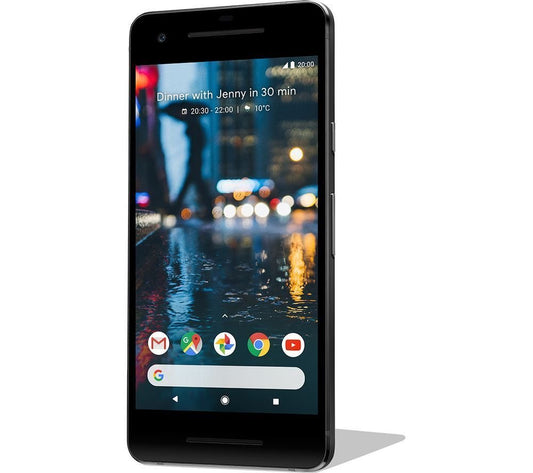In today’s digital age, privacy has become a focal point for individuals and businesses alike. As technology evolves, so does our understanding of the importance of securing our personal information. The evolution of privacy phones not only reflects advancements in technology but also highlights a growing concern for privacy in our everyday lives. In this article, we will explore the history of privacy phones and examine key developments that have shaped their design and functionality.
The Early Days of Communication Privacy
The journey of privacy phones can be traced back to the early days of telecommunication. During the 1960s and 1970s, landline phones dominated personal communication, and privacy was largely taken for granted. However, as more people began using telephones, concerns about eavesdropping started to emerge. Innovative engineering attempts were made to secure conversations, but it wasn’t until the arrival of mobile technology that a serious need for privacy began to materialize.
Introduction of Cell Phones
The introduction of cell phones in the 1980s opened up a new realm of possibilities but also new vulnerabilities. Unlike landlines, which typically offered a fixed location, mobile devices could be used almost anywhere. As the popularity of cell phones surged, people grew increasingly aware that their conversations might be intercepted. This awareness created an urgency for more secure devices. However, early mobile phones lacked the encryption features needed to guarantee user privacy.
The Birth of Encrypted Communication
As we moved into the 1990s, encryption technology began to evolve rapidly. Although early encryption methods were primarily used by military and government entities, private enterprises recognized its potential to protect sensitive business communications. Consequently, third-party applications that offered end-to-end encryption started to emerge. Users could now communicate securely over the internet, paving the way for a transformation in mobile privacy.
The Rise of Smart Devices
The explosion of smartphones in the late 2000s brought new levels of convenience but also added layers of complexity regarding privacy. These devices were packed with applications that collected user data for improved services but often without explicit user consent. In response to growing privacy concerns, manufacturers began to include security features in their devices. This period marked the beginning of a serious investment in creating privacy-oriented smartphones.
The Dawn of Privacy-Centric Phones
With the rise in awareness about digital privacy, several companies started focusing on providing devices that prioritized user security. Brands began producing privacy phones specifically designed to guard against surveillance and data theft. These devices emerged as a response to rampant data breaches and privacy scandals, capturing the attention of privacy-conscious consumers and businesses alike.
Anonymity and Secure Features
Privacy-centric phones began to include features such as anonymous browsing, secure messaging apps, and built-in VPNs. These additions were aimed at minimizing data collection and enhancing users' control over their own information. As consumers became more educated about digital security, the demand for these specialized phones grew. The introduction of systems like the root Samsung Galaxy S9 Plus showcased how advanced technology could create a fortified environment for private communication.
Mainstream Adoption of Privacy Phones
As privacy phones gained traction, mainstream companies began to recognize the demand for secure communication. The integration of biometric security features such as fingerprint scanners and facial recognition technology catered to both usability and security. Such advancements underscored the trend toward a lifestyle that accepted, and even anticipated, digital privacy concerns.
Consumer Education and Market Growth
Awareness of digital privacy continued to grow, driven by high-profile data breaches and scandals that made headlines. As consumers became more adept at understanding their digital footprint, they increasingly sought out products that promised enhanced privacy. This shifting landscape encouraged businesses to pivot toward safeguarding customer information. The simultaneous growth in online shopping has led to an ever-automating industry, making it critical for businesses to offer secure platforms while ensuring that consumer data remains untouchable.
The Impact of Regulatory Changes
Regulatory measures and policies around privacy have played a crucial role in the evolution of privacy phones. With the introduction of regulations such as the General Data Protection Regulation (GDPR) in Europe and similar legislation elsewhere, companies faced increasing pressure to protect user data. This legislative landscape prompted a shift in corporate practices, pushing many manufacturers to adopt privacy-by-design principles.
Privacy Phones as a Business Asset
For businesses, adopting privacy phones has increasingly become an essential strategy. Communication confidentiality is critical when it comes to business transactions involving sensitive information. Organizations are now looking at privacy phones as a business asset that satisfies legal obligations while providing a competitive edge by fostering consumer trust. An effective privacy strategy can help firms forge strong relationships with customers concerned about data handling practices.
The Role of Open-Source Solutions
The open-source movement has further propelled the privacy phone industry. Open-source operating systems provide a platform where users can have full control over their devices without unintended data leaks. This created a cottage industry around custom-made privacy solutions, with developers and enthusiasts working to harden systems against vulnerabilities. As consumers seek alternatives to mainstream operating systems that prioritize data collection, open-source privacy phones are gaining popularity.
Community-Driven Innovations
The privacy phone community has become increasingly vibrant, with collaborative efforts driving innovation. Users often work alongside developers to report bugs, propose enhancements, and suggest features that align with privacy needs. This collaborative environment allows for rapid adaptation to newly discovered vulnerabilities and evolving threats, reinforcing a collective desire for security.
The Future of Privacy Phones
Looking ahead, the privacy phone ecosystem is expected to evolve further as technology continues to advance. Emerging technologies such as quantum encryption and decentralized communication systems hold the promise of even more robust privacy protections. As consumers, businesses, and governments continue battling against cyber threats, the demand for secure communication channels will only grow stronger.
Bridging Accessibility and Security
One of the significant challenges in the realm of privacy technology is striking a balance between accessibility and high-level security. As privacy phones become more mainstream, manufacturers must ensure these devices are not only highly secure but also user-friendly. The ideal privacy phone will seamlessly integrate security features while maintaining an enjoyable user experience.
What You Can Do About Privacy
As an individual or business, prioritizing your privacy is crucial. Here are some steps you can take to protect your data effectively:
- Choose Your Devices Wisely: Invest in privacy phones known for their robust security features.
- Educate Yourself: Stay informed about the latest developments in digital security and best practices.
- Utilize Encryption: Use applications and services that offer end-to-end encryption for your communications.
- Be Mindful of Permissions: Regularly assess the permissions granted to your applications and restrict access to sensitive information.
- Regular Updates: Always keep your devices updated to benefit from the latest security patches and improvements.
A Bright Future Awaits
As we traverse further into a digitally connected world, the evolution of privacy phones plays a critical role in safeguarding our personal information and business confidentiality. With ongoing innovations and heightened awareness, the trajectory for privacy-centric communication devices looks promising. The path forward will undoubtedly be shaped by both technological advancements and the insatiable quest for privacy in an increasingly interconnected society.










